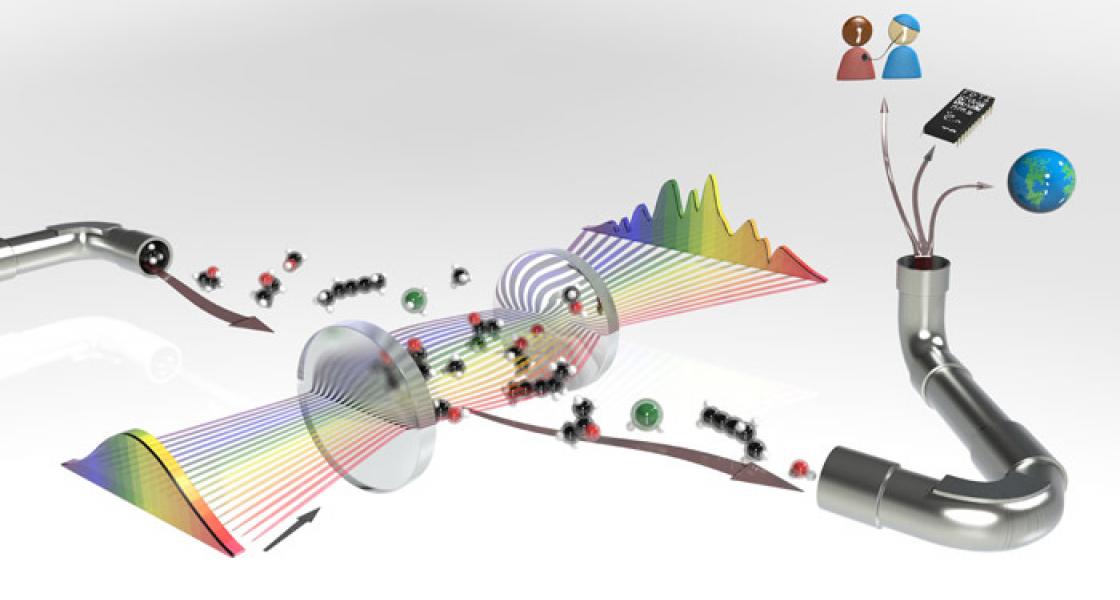Fellow Jun Ye’s group has enhanced the molecular fingerprinting technique with the development of a mid-infrared (mid-IR) frequency comb. The new rapid-detection technique can now identify traces of a wider variety of molecules found in mixtures of gases. It offers many advantages for chemical analysis of the atmosphere, climate science studies, and the detection of suspicious substances. In addition, planning is already underway for clinical trials of a noninvasive medical breath analyzer that incorporates technique (See JILA Light & Matter, Spring 2008).
The new trace gas detection system was developed by former research associate Florian Adler, who worked with research associates Piotr Maslowski and Aleksandra Foltynowicz, graduate students Kevin Cossell and Travis Briles, Fellow Jun Ye, and a colleague from IMRA American, Inc.
With the new mid-IR frequency comb as a source of light, the range of the molecular fingerprinting technique has been extended into spectral regions that cover frequencies associated with fundamental vibrations of many organic molecules (containing carbon and hydrogen atoms). As a result, the technique can now identify more molecules and at lower concentrations.
The comb is generated by an ultrafast laser that emits tens of thousands of different colors of light of specific frequencies that can be precisely measured. When comb light passes through a mixture of gases, different chemicals absorb different colors of the light. By analyzing which colors are absorbed and in what amounts, the researchers can determine the identity and concentration of the different molecules in a mixture. In a test of the new system, Adler and his colleagues measured the spectra of a dozen organic molecules, including the “greenhouse” gases methane, carbon dioxide, and nitrous oxide; air pollutants isoprene and formaldehyde; and two molecules probed in human breath analysis: ethane (a sign of asthma) and methanol (an indicator of kidney failure).
The new laser uses an optical parametric oscillator, or OPO, to shift the light from a near-IR frequency comb to the mid-IR. By combining the OPO-based laser with conventional Fourier-transform infrared spectroscopy (FTIR), Adler and his colleagues were able to devise a system that was much faster than conventional FTIR spectrometers. Their technique can identify and measure the concentrations of many molecules in less than one minute, as compared to hours. This speed is crucial for many practical applications.
The Ye group is now looking to extend the reach of frequency combs to wavelengths centered around 10 µm and probe another key region for molecular fingerprinting. Fellow David Nesbitt is particularly excited with this prospect as he foresees exciting scientific opportunities for exploring a whole new landscape with high resolution comb sources. The group is also planning to work on modifying the equipment to make it portable — a key feature for such practical applications as airborne or satellite-based chemical analysis of the atmosphere. - Julie Phillips




